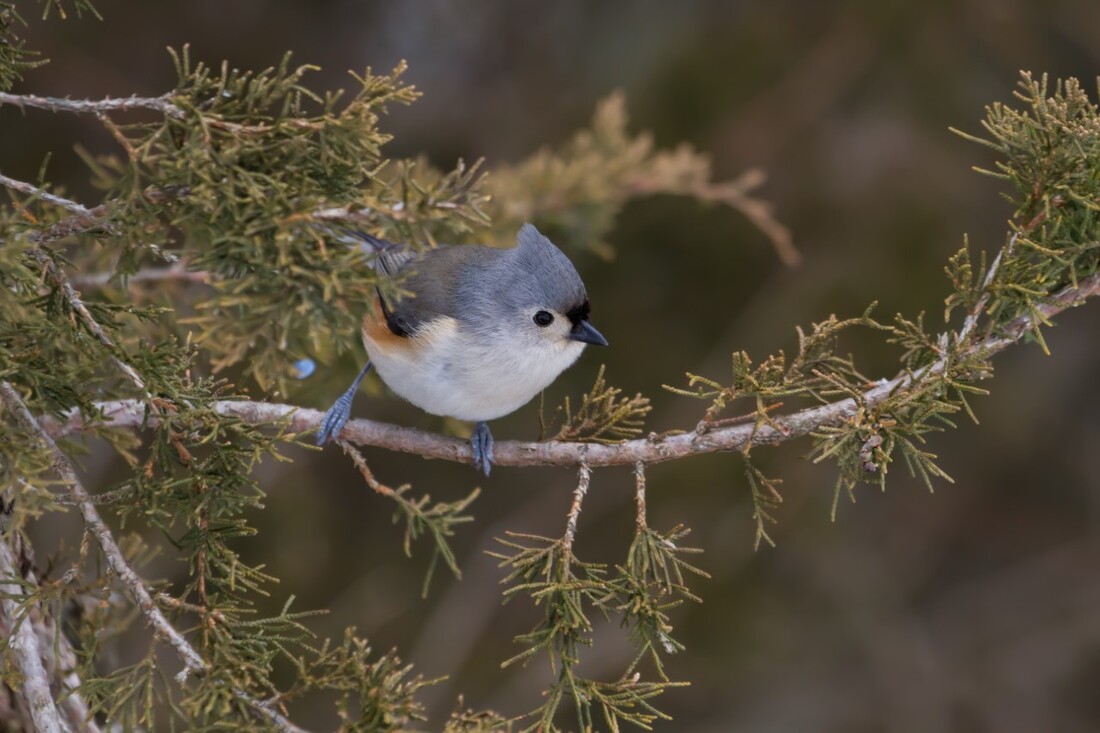Eastern Red Cedar (Juniperus virginiana)
The eastern red cedar is an ancient tree, dating to aboriginal America, where fossil evidence indicates it covered large portions of the continent. It’s prized for its fragrant, durable wood, and its branches and berries provide important food and shelter for songbirds throughout the winter—all good reasons to include it in a landscape. But Dr Robert “Butterfly Bob” Snetsinger planted this species at the SBG for a special purpose: attracting the juniper hairstreak (Callophrys gryneus).
This beautiful member of the Lycaenidae (or ‘gossamer winged’) family depends on the Eastern red cedar as its host plant. Eggs are laid singly on the tip of leaves; the vividly green larvae are perfectly camouflaged against the needles, as are the adults, which can be hard to spot. Adult males perch on the foliage and wait for females, who nectar nearby on plants such as milkweed, mountain mint or clover. Often, the best technique for the juniper hairstreak hunter to employ is to shake the tree gently and watch for a cloud of male butterflies to flutter into the air. (Stunning photos can be found here: https://www.naba.org/.../construct-species-page.asp...)
Eastern red cedar thrives in sunny, open spots and a wide variety of soils. It’s a deep-rooted tree that’s insect and disease tolerant, and makes an excellent windbreak or screen. (One note of caution: if there are apple or crabapple trees nearby, choose a different evergreen, since Eastern red cedar does carry the pathogen that causes cedar apple rust.) Last but not least, it provides excellent habitat for more than 50 types of birds and many other garden friends. What’s not to love?
Author: Lisa Schneider
Photo: Paul Roedding


 RSS Feed
RSS Feed